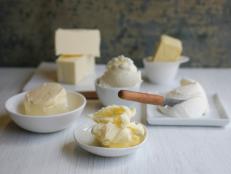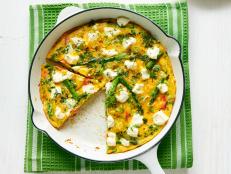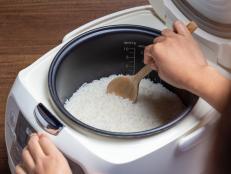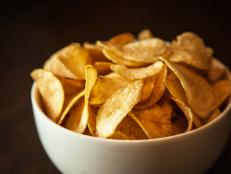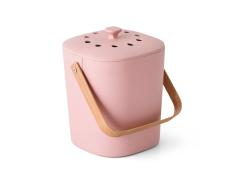The Three Must-Have Knives
There are only three knives that are crucial in a kitchen: a chef's knife, a paring knife and a serrated knife. Any other knives are a luxury--they can make cooking easier and more enjoyable, but are unnecessary.
A chef's knife (sometimes called a cook's knife) is the most important knife to have in your kitchen. It has a wide blade between six and ten inches long and is used primarily for chopping, though it can be used for anything you want to do. The blade of a classic, French-style chef's knife curves upward toward the tip. A Japanese-style Santoku knife can be used in place of a French-style chef's knife; it's usually shorter and has a "sheep's foot" tip, meaning the top of the tip curves downward. European manufacturers of Santoku knives add a Granton or kullenschiff edge, a row of hollow-ground pockets that prevent food from sticking to the knife's surface.
A paring knife looks like a miniature chef's knife, with a blade ranging from two to four inches long. It's good for delicate tasks where a larger blade would get in the way. Paring knives are ideal for peeling onions, coring tomatoes or trimming vegetables.
A serrated knife is used for bread, tomatoes and even meat. Serrated knives are most useful on foods that have one texture on the outside and another inside, like a hard-crusted bread or a tomato. Choose a longer serrated knife to minimize the amount of sawing necessary. An offset serrated knife, sometimes called a deli knife, minimizes the chance of hitting your knuckles on the cutting board once you're done cutting.
The Extras:
A slicing knife is for cutting cooked meat, poultry and fish. It should be long enough (eight to 10 inches) to span a large roast, narrow for reduced drag and flexible enough to easily separate flesh from bone.
In skilled hands, a cleaver can do everything a chef's knife can do--slice, chop, fillet, scoop, smash--and more. Its heavy, rectangular blade is designed to hack through the sorts of bones other knives have a hard time with.
A boning knife is for the delicate task of separating raw meat, poultry and fish from bone. Its blade, six or so inches long, is thinner than a slicing knife's and flexible enough to follow the contours of a fish or bird.

























